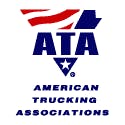Trucking association urges caution with emissions rules
The Obama administration announced that the US Environmental Protection Agency (EPA) and US Department of Transportation (DOT) will again be coordinating their efforts to implement a uniform, second phase national program to reduce greenhouse gas (GHG) emissions and improve fuel efficiency from medium and heavy-duty trucks and buses.
This announcement is the start of a process that will be fully fleshed-out and completed in a formal rulemaking process.
Leaders of the American Trucking Associations (ATA), while supporting the goal of improved fuel efficiency of large trucks, pressed the Obama administration to proceed cautiously with setting new standards.
“We stood shoulder-to-shoulder with the president and his administration in 2011 when the historic first fuel efficiency standards were set for heavy-duty vehicles,” said Bill Graves, ATA president and chief executive officer. “As we begin this new round of standards, ATA hopes the administration will set forth a path that is both based on the best science and research available and economically achievable.”
“Trucking is a very diverse industry,” said ATA Chairman Phil Byrd, president of Bulldog Hiway Express, based in Charleston SC. “As such, whatever standards the administration sets should reflect that diversity, and whatever tests are devised should accurately reflect what drivers face on the roads every day.”
In 2008, ATA released a series of sustainability recommendations including a national speed limit of 65 miles per hour, increased participation in EPA SmartWay for fuel efficiency, improving truck productivity, and reductions in idling. In 2011, ATA supported the historic first round of fuel efficiency standards.
At its most recent Executive Committee meeting, ATA drafted a set of guiding principles for evaluating future emissions standards. Those principles included items like harmonization with existing California Air Resources Board rules, economic and scientific feasibility, and a recognition of trucking’s diversity in use of equipment.
“Fuel is one of our industry’s largest expenses, so it makes sense that as an industry we would support proposals to use less of it,” said Graves. “However, we should make sure that new rules don’t conflict with safety or other environmental regulations, nor should they force specific types of technology onto the market before they are fully tested and ready.”

